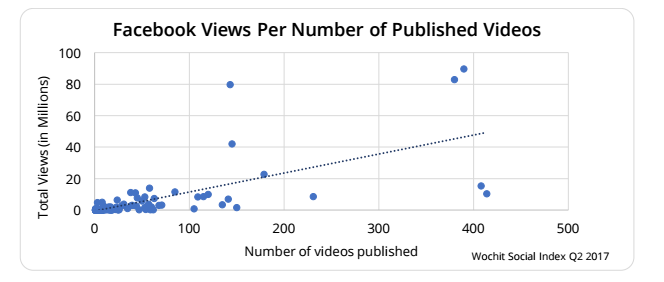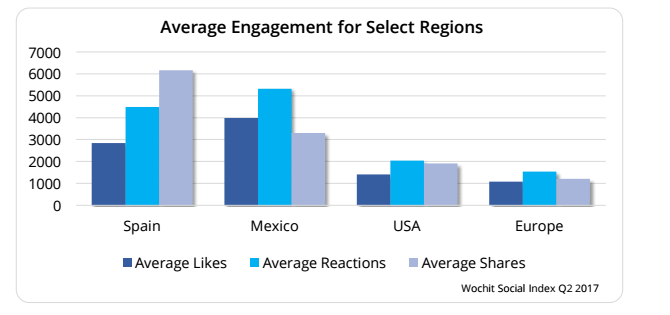Only 1 percent of videos posted to Facebook actually end up going viral — but it probably helps if your video is square rather than horizontal or vertical, is engaging in ways beyond Likes, and/or is geared toward Spanish speakers, an analysis by social video production company Wochit found.
Wochit analyzed more than 5,000 social videos that were created by more than 100 publishers between March and May 2017. It compared the results to the three-month period between December 2016 and February 2017.Wochit uses artificial intelligence to create and help distribute short-form social videos around trending topics for various media companies including Time Inc., Gannett, and Der Spiegel. (Last year, The New York Times’ John Herrman took a look at Wochit and its rival video automation company, Wibbitz.) This study was based off of the video content it has developed and shared for its clients.
— More video, more money: Earlier this year, 75.95 percent of Wochit’s publishers said they planned to push video as a strategy for increased engagement and revenue. The analysis found a strong correlation between the number of videos posted on a Facebook page and the total number of views received.
 — Being square is no longer a bad thing: Who needs vertical or horizontal framing when you can go for a square shot, which takes up 78 percent more “screen real estate in the [mobile] social feed”? Average views for square videos rose 136.6 percent over horizontal videos, with increases in the double digits for shares, likes, and comments. Most videos are still published as horizontal shots, though the number of square videos produced climbed about 10 percentage points, to 39.8 percent.
— Being square is no longer a bad thing: Who needs vertical or horizontal framing when you can go for a square shot, which takes up 78 percent more “screen real estate in the [mobile] social feed”? Average views for square videos rose 136.6 percent over horizontal videos, with increases in the double digits for shares, likes, and comments. Most videos are still published as horizontal shots, though the number of square videos produced climbed about 10 percentage points, to 39.8 percent.
— The elite one percent: Wochit defines “going viral” as hitting one million views, and the number of videos in its arsenal reaching that benchmark is consistent over the first set of data: 1.1 percent. It’s considered the “lion’s share of total engagement, receiving 43.2 percent of total views and 63.98 percent of total shares.”
— Dime más: The only countries that view/share videos more than the United States are Spain and Mexico.